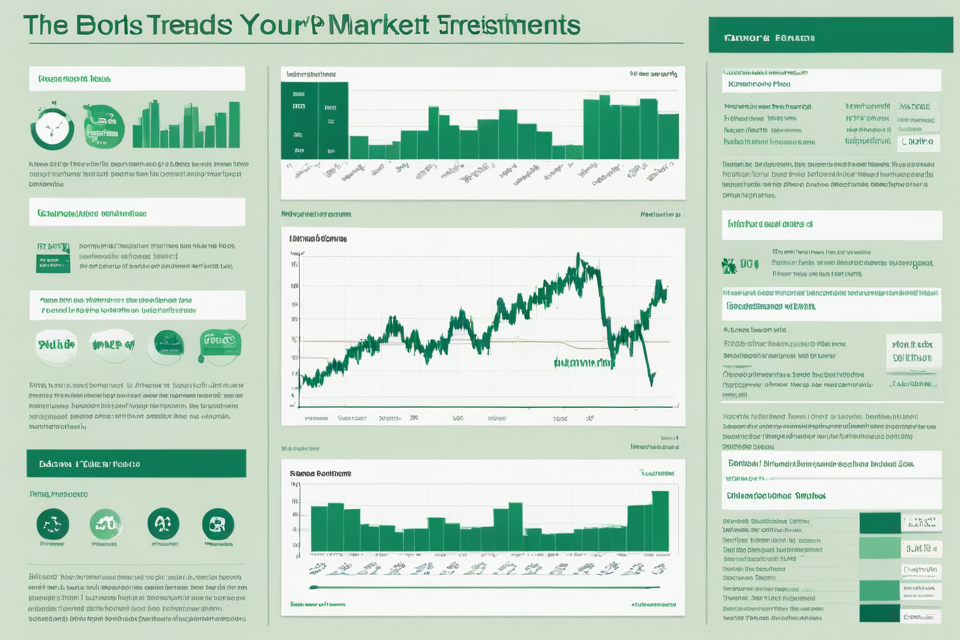Understanding how market trends influence your investments is crucial for making informed financial decisions and optimizing your portfolio’s performance. Market trends—whether bullish or bearish—can significantly impact the value of your investments, and being able to navigate these trends effectively can help you achieve your financial goals. In this blog, we’ll explore how market trends affect investments, how to analyze them, and strategies to leverage them to your advantage.
1. What Are Market Trends?
Market trends refer to the general direction in which the market or a specific asset class is moving over a period. Trends can be categorized into three main types:
- Bullish Trends: Characterized by rising prices and investor optimism. During a bullish trend, the market experiences an upward movement, often leading to increased investment returns.
- Bearish Trends: Marked by declining prices and investor pessimism. A bearish trend sees the market or asset prices falling, which can lead to decreased returns and potential losses.
- Sideways Trends: Involves periods where the market shows little to no significant movement, fluctuating within a narrow range. This trend can indicate market indecision or consolidation.
2. How Market Trends Affect Your Investments
Understanding how market trends impact your investments is crucial for effective portfolio management. Here’s how different trends can influence your assets:
- Stock Market: Bullish trends can lead to higher stock prices, potentially increasing your portfolio’s value. Conversely, bearish trends can cause stock prices to drop, impacting the value of your equity investments.
- Bond Market: Interest rates and economic conditions influence bond prices. During bullish trends, interest rates may rise, causing bond prices to fall. In bearish trends, interest rates may decline, leading to higher bond prices.
- Real Estate: Market trends can impact property values and rental income. In a bullish trend, property values typically rise, benefiting real estate investors. In a bearish trend, property values may decline, affecting investment returns.
- Commodities: Commodities like gold and oil can be influenced by market trends and economic conditions. For example, during economic uncertainty, commodities like gold may become more attractive as a safe-haven investment.
3. Analyzing Market Trends
Effective analysis of market trends involves examining various indicators and data points:
- Technical Analysis: This involves analyzing historical price charts, patterns, and technical indicators like moving averages and Relative Strength Index (RSI) to identify trends and potential entry and exit points.
- Fundamental Analysis: Evaluate economic indicators, financial statements, and market conditions to understand the underlying factors driving market trends. This includes analyzing GDP growth, interest rates, corporate earnings, and geopolitical events.
- Sentiment Analysis: Gauge investor sentiment through surveys, news, and social media to understand market mood and potential trend shifts. Sentiment analysis can provide insights into whether the market is overly optimistic or pessimistic.
4. Strategies for Leveraging Market Trends
Once you understand how market trends affect your investments, you can employ strategies to leverage them effectively:
- Trend Following: Invest in assets that are currently trending upwards (bullish) and consider selling or avoiding assets that are trending downwards (bearish). Trend-following strategies can help you capitalize on prevailing market movements.
- Diversification: Spread your investments across various asset classes and sectors to reduce risk and mitigate the impact of negative market trends. Diversification can help stabilize your portfolio during volatile periods.
- Hedging: Use hedging strategies such as options, futures, or inverse exchange-traded funds (ETFs) to protect your portfolio against potential losses during bearish trends. Hedging can provide a safety net and reduce overall risk.
- Rebalancing: Regularly review and adjust your portfolio to maintain your desired asset allocation. Rebalancing ensures that your investments remain aligned with your risk tolerance and investment goals.
5. Staying Informed and Adapting
Market trends are dynamic and can change rapidly. Staying informed and adapting your strategies is key to managing your investments effectively:
- Monitor Market News: Keep up with financial news, market reports, and economic data to stay updated on current trends and potential market shifts.
- Review Investment Goals: Regularly reassess your investment goals and risk tolerance to ensure they align with prevailing market conditions and your long-term objectives.
- Seek Professional Advice: Consult with financial advisors or investment professionals to gain expert insights and personalized recommendations based on current market trends and your financial situation

